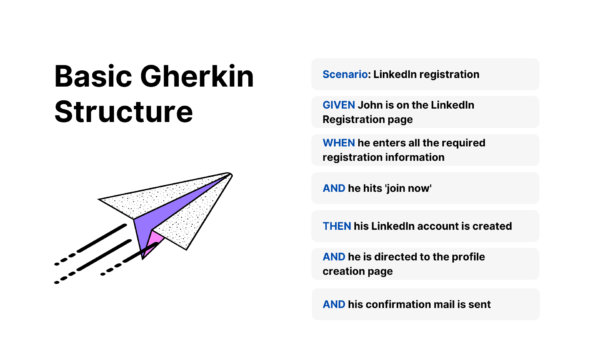Test Automation Best Practices To Implement In 2024
An INFJ personality wielding brevity in speech and writing.
Testing automation is beneficial to businesses for a number of reasons. If you want to get the most bang for your buck with your business applications, make sure that you follow the best practices for test automation. From helping improve your software quality to shortening your development cycles, testing automation can do your business a world of good.
Ensuring that you test thoroughly is critical to your business product’s success. Without proper testing, your product will be rife with issues that will take a lot of time to solve, and not to mention that there will be a bunch of disgruntled customers. This will also reduce the trust that your customers have in your business. The last thing a business wants is to see their reputation get a hit because they didn’t test the product well. It is a blunder that can be easily avoided.
Before discussing best practices, let’s understand,
What is Test Automation?
Automated testing or Test Automation is the process of running hundreds of test suites using a test automation framework and a set of test tools. Automated testing is important because it helps in automating some of the repetitive tests – all workflows, fields, and scenarios, where manual testing will consume a lot of time and becomes a bottleneck to achieving faster releases.
Now we’ll see some of the proven test automation best practices for 2024.
8 Stages of test automation strategy
1. Decide what you need to automate:
If you want to automate every single aspect of testing, then it isn’t the right approach. You need to determine which test cases you want to automate. Here are a few tips on which are some of the things that you can automate in the testing process.
- Tests that tend to cause human error
- Functionalities that are oft-used
- Ones that are difficult to perform manually
- Tests that run on a variety of hardware or software platforms
- Areas where multiple data sets are required
- Tests that are repetitive and require multiple builds
For success in test automation, you need to have a strategy that is arrived at after proper planning. Find which tests you need to automate and use them as a benchmark for tests in the future.
Knowing the goals behind testing will help you differentiate the ones that are a necessity and the ones that could be automated later. It will help you use your resources sparingly.
2. Finding the right automation testing tool:
Since there are a lot of automation testing tools in the market, it is essential that you use the right strategies while choosing one. Below are a few points that will help in your search for your business’ automation testing tool.
- Does it support the platforms and technology that you use?
- Do you need support for testing mobile applications?
- What are the applications and operating systems that you are using?
- Can testers of any skill level be able to use the tool effectively?
- Does the tool support record-and-playback test creation and manual creation of automated tests?
- Does the tool allow you to verify values, databases, and the various functionalities in your application?
- If the application’s user interface changes, do the automated tests break?
- Does the automation testing tool integrate with your existing ecosystem?
The answers to the above questions will guide you in choosing the right testing automation testing tool.
3. Decide the test automation architecture:
Before you think about the type of ROI that you would get from test automation, it is wise to evaluate the testing methods that you are using.
Here are some instances when you should not employ automated testing:
- User Experience: It is impossible to expect a tool to understand the emotions that humans go through. To test the usability of software, you need a human to test it.
- Accessibility: Will the users be able to get the most out of the app? The features should be presented in such a way that it is discoverable and understandable for users without having to follow a difficult path.
- Exploratory Testing: When a user is on an app, they do not follow a pattern. None of the paths are determined, and it is imperative that you have humans to understand and test accordingly. In cases like these, you can perform exploratory testing instead of automating it.
- Dynamic Content Testing: When automated tests are being run, identifying the state of the content can be difficult. You can use dynamic content testing and then employ automated testing along with it.
4. Eliminate uncertainty by removing unstable tests:
Automation is widely used because it provides accurate and consistent results. If a test fails, the testers have to see what went wrong. Unfortunately, there has been an increase in the number of false positives and inconsistencies, and it increases the time required to analyze these errors.
What can be done in such a scenario?
To eliminate uncertainty, you need to remove the unstable tests in regression packs. Ensure that there is sufficient test planning before running any tests. Every test should be up to date at all times, and the sanity and validity of automated tests are assessed during every test cycle.
Pro tip: Learn how to solve test flakiness the Google way in this short-video
5. Consider a BDD framework:
BDD is a software framework in which software is implemented in the exact way that its behavior is described. They can be implemented on any type of testing including unit tests, components, integration, and more. When you use the BDD framework, it increases understanding between the team members and improves the team’s collaboration as well as the tests are written in plain English like language called Gherkin.
When you write your tests with BDD, you are allowed the privilege of creating specifications that help your team understand the tests and requirements better. You can even create a clear test documentation.
BDD helps the business managers understand the tests and its results. The managers can add value to the testing process by recommending changes that will help the business.
Here’s an example:

6. Use good quality test data:
We cannot emphasize more on the importance of using good test data for your automation efforts. The data which you will input should be usually stored in an external file. The data could be from a database or any data source- XML files, text, Excel sheets, or database tables. The contents of the data files are understood by the automated testing tool.
When you use external data, your automated tests become reusable and easier to maintain. If you want different testing scenarios, you can easily extend the data files with new data without having to edit the actual automated test.
7. Use data-driven testing:
To reduce the amount of code needed for automation and make tests more maintainable, it is recommended to use data-driven testing.
Data-driven testing is a test automation approach where external data sources are used to drive the testing process. Test cases are designed to be flexible and reusable, so that they can be executed with different sets of test data. The test automation code reads the data from the external source and uses it to drive the test case execution. Data-driven testing allows for greater flexibility, reusability, scalability, and maintainability of the test automation framework.
Let’s say we have a login page for a web app, and we want to test it with different sets of credentials. Instead of manually entering each set of credentials and checking the results, we can use data-driven testing to automate the process.
We start by creating a spreadsheet with the different sets of login credentials we want to test. Each row represents one set of credentials, with columns for the username, password, and expected result.
For example, we might have a row for user1/pass1, which we expect to result in a successful login, and another row for user2/pass2, which we also expect to result in a successful login.
The test automation code reads the data from the spreadsheet and uses it to execute the login test cases. For each set of credentials in the spreadsheet, the code enters the username and password values into the login form, and then checks whether the actual result matches the expected result from the spreadsheet.
By using data-driven testing in this way, we can easily test the login functionality with multiple sets of credentials without having to write separate test cases for each set. This makes the testing process more efficient and saves us time and effort.
8. Implement continuous integration and delivery
For test automation, implementing CI/CD involves integrating the automated tests into the CI/CD pipeline. When a developer makes a change to the code, the CI/CD pipeline automatically builds and deploys the updated application, and then runs the automated tests to ensure that the changes did not introduce any issues.
Here are some benefits of implementing CI/CD for test automation:
- Faster feedback: By running automated tests as part of the CI/CD pipeline, developers can quickly get feedback on their changes and identify any issues before they are deployed to production.
- Improved quality: By catching issues early in the development process, teams can ensure that their software releases are of high quality and meet the needs of their users.
- Reduced risk: By automating the testing process and catching issues early, teams can reduce the risk of introducing bugs or other issues into the production environment.
Final thoughts
If you are toying with the idea of automating your organization’s testing efforts, then you need to follow the standard practices that are supposed to be followed. Make sure you plan well based on your goals and do not be afraid to experiment. Test automation will fetch you incredible results if you do it the right way. You will not only cut costs with test automation, but it will also increase your team’s productivity, and you will be able to create applications that your users will love.
Are you looking for a technology partner who will help set up test automation for your business? The team at Zuci has a bunch of highly-experienced technologists who know the right kind of automation tool that your business would require, and can add test automation to your current testing repertoire.
Looking to improve your test automation coverage? Take a look at Zuci’s test automation services and see how you can leverage Zuci for your business needs.
Related Posts






















